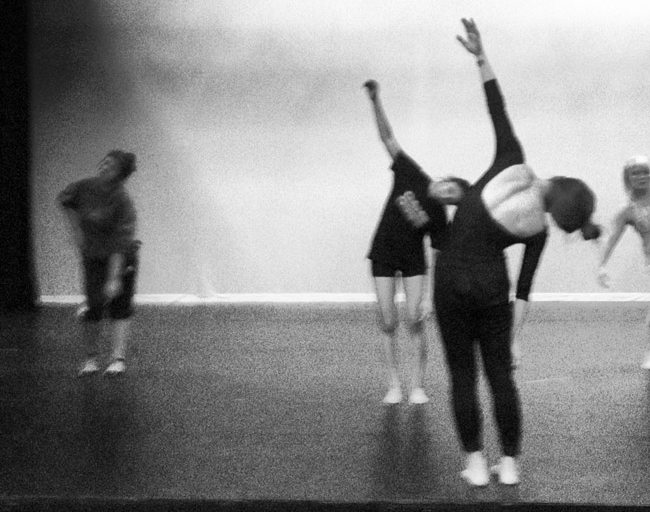Glamborous
>> DANCE PERFORMANCE TAKES ON DARK SUBJECT
Last Thursday, I was coerced into attending Spring Footholds, a student choreography showcase at UH’s Kennedy Theatre.
Halfway through the first set of pieces before intermission, the curtains rose for Tomomi Jane Hara’s Darkness in the Light, and I could immediately tell that it was going to be a compelling piece.
She opened with a solo of a slow collapse that started with a silenced scream or a gasp so deep that it overtook her entire face, then spread to her body, drearily pulling her to the floor in a slow backbend. Onlooking dancers passed eerily behind her, rubbernecking at her struggle, but coldly unaffected by her plight. The shameful admission of ignoring the suffering of others was an underlying theme that crawled throughout the piece at a deliberately lumbering pace.
As a dancer for IONA Contemporary Dance Theatre, one of the Island’s most forward-thinking dance companies, Hara has been involved with some of the best movers and movement on the scene. Yet, her piece’s soul seemed to stem from elsewhere.
A dual citizen, Hara was heavily intrigued by the controversial Japanese dance style of Butoh. Unlike ballet, jazz or hip-hop, there are no definitive moves to classify the form. Rather, it is a deliberate desire to explore taboo, undesirable and troubling topics that fueled the founders’ movement in the 1960s.
I met up with Hara to talk about her concept.
“I would be happy to hear if some people didn’t like it and said it was not beautiful, that it was creepy and it was not happy,” she says. “Well yeah, the world is not always beautiful, and the world is not always happy. Often, the world is ugly.”
However, there were moments of astounding beauty. A gradual migration of the entire ensemble to the back corner of the stage made a pile of bodies that slowly morphed into a rotating basket of interwoven limbs. Turning an eye to suffering became the downfall of the entire cast, as the suffering spread to each member like a curse. The subject matter was dark — but the future looks bright for Hara and her work.
Another highlight was Mareva Minerbi’s Lifeline to Somewhere. Exploring the concept of escapism, a projected low-fiimage printed by UH artist Donna Louie set the backdrop with what appeared to be a mysterious dream-fragment of a city peaking through clouds. Cast members became stepping stones for others to hop over in a mix of structured contact improv and choreographed events. Dancer Erica Wong stole the show with her perfect kicks and sizzling solo that broke through the ether like a geode illuminated by magic.
Both Hara and Minerbi will be dancing in an adaptation of Minerbi’s piece, Psychotropics, at 9 p.m. Feb. 13 at Kakaako Agora as a part of the Oahu Fringe Festival. Hara’s piece will be shown again at 6 p.m. March 6 at the State Legislature.


